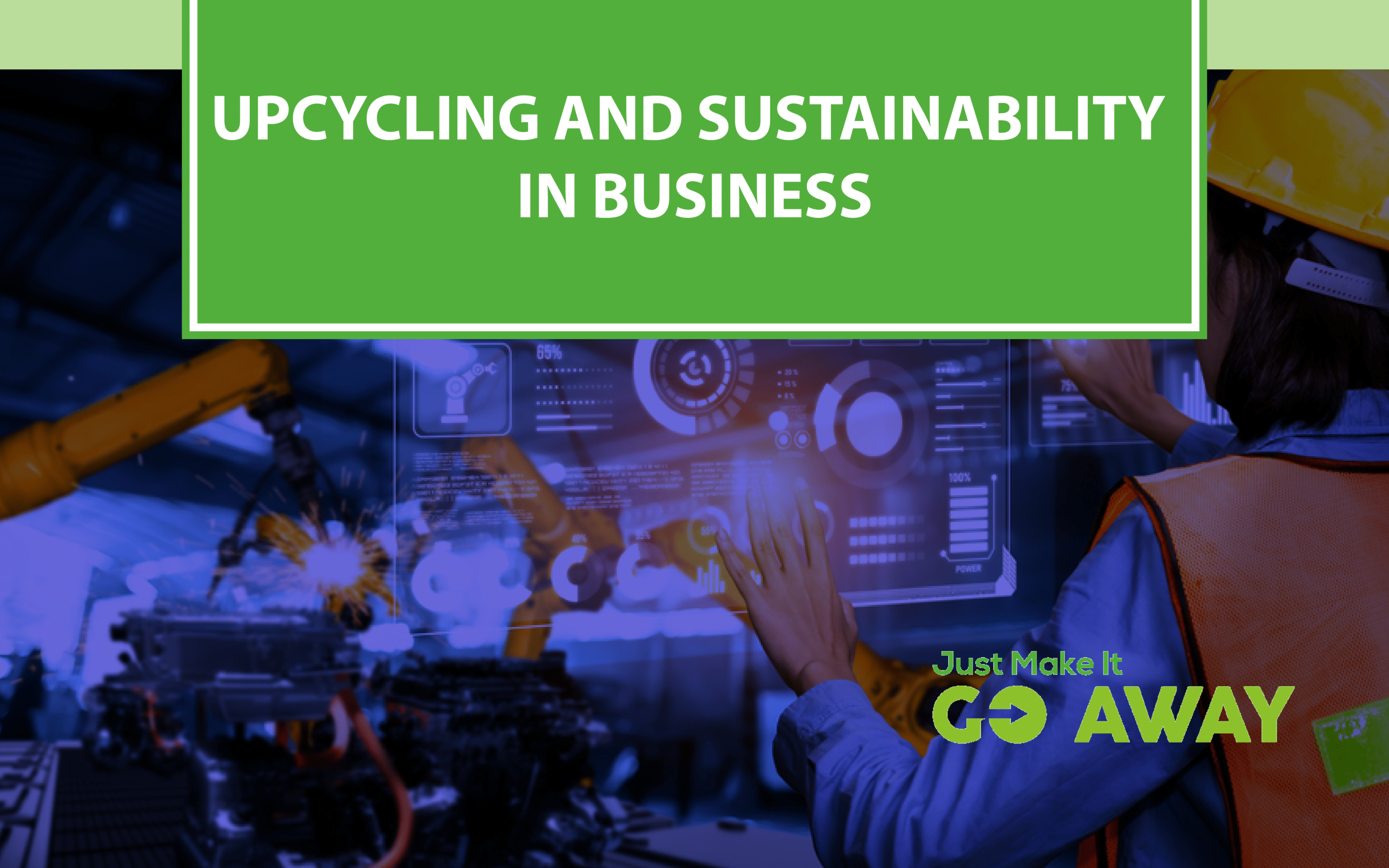You probably know about recycling, but what is upcycling? Upcycling is the reuse of old or used material into a new product of higher value. Pre-consumer waste such as textile scraps and post-consumer waste such as used furniture or thrown-away plastics can be refashioned into new items and given a new life through upcycling and sustainability. Some high-profile examples include A$AP Rocky’s MET Gala quilt or Adidas’ production of shoes made with ocean plastic. Businesses can take advantage of upcycling to save money, increase their profit margin, and advance their sustainability initiatives. Read on to learn more about upcycling and sustainability!
Upcycling vs. Recycling
Recycling takes consumer materials like aluminum, plastic, paper, or glass and breaks them down into a base material, to be reused for a similar purpose. Upcycled materials often aren’t broken down into raw materials, they are just refashioned. For instance, the hinges of an old door might be used for a storage box, or an old T-shirt may be cut up and resewn into a fashionable statement piece.
Recycling plastics almost always results in new plastic, but through upcycling, that plastic can be woven into fabrics and yarn or made into pens. Many cities and municipalities across the U.S. offer recycling services. However, for many reasons including lack of infrastructure and high costs, much of the waste Americans throw into recycling bins ends up in landfills. Upcycling is a way to make an already existing item work for you, usually with less effort and little to no processing.
How Upcycling Works
Anyone can upcycle! From using old thrift glassware for an art installation to repurposing old T-shirts into a quilted blanket, upcycling projects help save the planet and save you money. Upcycling is different from recycling, which breaks down post-consumer waste to be reused for similar purposes. Upcycling can be as simple as repainting a thrift-bought chair or restaining an old cabinet.
But upcycling is not always simple. There is an entire upcycling industry that employs processing and waste conversion methods to break down man-made waste such as plastics. A recent study published in 2022 explored and discussed many of the current plastic waste upcycling technologies, including photoreforming, gasification, mechanical reprocessing, and pyrolysis. All these methods take the plastic waste and produce high-value materials. More processing may be involved to then turn these materials into upcycled products. Raw materials such as wood or fabrics are often easier to upcycle as they don’t need to be broken down to be used in new products.
Upcycling and Sustainability
By upcycling waste materials, you’re doing more than just preventing the waste from being burned or sent to a landfill. Upcycling is just one way people can contribute to a circular economy. For those not familiar with the term, the concept of a circular economy is that reuse, recycling, and upcycling are central to all stages of production. This can range from managing raw materials and ensuring ethical supply chains, to creating reusable goods, to reducing waste at product end-of-life. Upcyclers also contribute to a more sustainable future by:
- Preserving natural resources
- Not creating demand for new unnecessary products
- Supporting local (when thrifting)
- Giving existing products a new life and alternative use
Upcycling and Business
Upcycling is more than just eco-friendly. Many green initiatives can save your business money, such as recycling overstocked and damaged goods or reducing energy and water usage, and upcycling is no different. Upcycling reduces the need for buying new products and prevents unnecessary expenditure in a supply chain when materials are readily available to be reused. Businesses can leverage this to increase their profit margin by reinventing scraps from production, such as climbing ropes made from scrap yarn or selling wood chips and sawdust to be compressed into fuel pellets. Businesses also benefit from being able to use up cycling as a selling point. Upcycling can help businesses advance their sustainability initiatives and be used as a marketing tool as long as they are not greenwashing. Another helpful thing for businesses to include in reporting is to create a sustainability report.
Manufacturing companies implementing green initiatives can also make the best of upcycling through circular economics. By implementing circular economics into a business model, businesses get the maximum value from their resources, save money, and oftentimes have more satisfied customers. Aside from upcycling, businesses can contribute to a circular economy by:
- Creating durable and reusable products
- Using biodegradable, compostable, or recyclable packaging
- Recycling scrap materials and materials used in production
- Finding a solution for excess products and overstocked materials
- Outfitting offices or warehouses with used furniture, potentially from companies moving or going out of business
How does your business or businesses you support implement upcycling?


